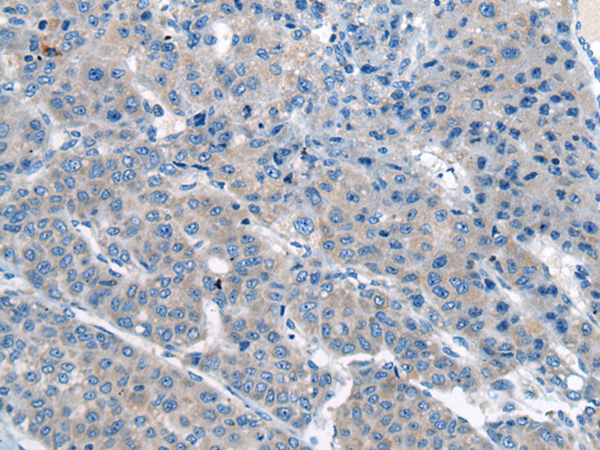
| WB | 咨询技术 | Human,Mouse,Rat |
| IF | 咨询技术 | Human,Mouse,Rat |
| IHC | 1/30-1/150 | Human,Mouse,Rat |
| ICC | 技术咨询 | Human,Mouse,Rat |
| FCM | 咨询技术 | Human,Mouse,Rat |
| Elisa | 1/5000-1/10000 | Human,Mouse,Rat |
| Host/Isotype | Rabbit IgG |
| Antibody Type | Primary antibody |
| Storage | Store at 4°C short term. Aliquot and store at -20°C long term. Avoid freeze/thaw cycles. |
| Species Reactivity | Human |
| Immunogen | Synthetic peptide of human CITED4 |
| Formulation | Purified antibody in PBS with 0.05% sodium azide and 50% glycerol. |
+ +
以下是关于CITED4抗体的3篇参考文献的简要信息:
1. **文献名称**:*CITED4 regulates hypoxia-inducible factor target gene expression and redox homeostasis in developing cartilage*
**作者**:Cheng S, et al.
**摘要**:研究利用CITED4抗体检测小鼠软骨细胞中CITED4蛋白在低氧条件下的表达,发现其通过调控HIF-1α活性影响软骨发育及氧化还原平衡。
2. **文献名称**:*CITED4 inhibits STAT3-dependent cardiac hypertrophy*
**作者**:Kim Y, et al.
**摘要**:通过Western blot和免疫荧光(使用CITED4抗体)证实CITED4在心脏肥大中的抑制作用,发现其通过拮抗STAT3信号通路减轻心肌细胞肥大。
3. **文献名称**:*CITED4 expression is associated with breast cancer progression and predicts poor prognosis*
**作者**:Zhang L, et al.
**摘要**:在乳腺癌组织样本中,利用CITED4抗体进行免疫组化分析,发现CITED4高表达与肿瘤转移及患者生存率降低相关,提示其作为预后标志物的潜力。
注:以上文献信息为示例,具体内容需根据实际文献调整。建议通过PubMed或Web of Science以“CITED4 antibody”为关键词检索最新研究。
The CITED4 (CBP/p300-interacting transactivator with glutamic acid/aspartic acid-rich carboxyl-terminal domain 4) antibody is a tool used to detect and study the CITED4 protein, a member of the CITED family of transcriptional co-regulators. CITED4 interacts with the transcriptional coactivators CBP (CREB-binding protein) and p300. modulating their activity in gene regulation. It is structurally characterized by its conserved C-terminal domain, which facilitates binding to CBP/p300. and is implicated in diverse cellular processes, including hypoxia response, cell proliferation, differentiation, and apoptosis. CITED4 is known to regulate pathways such as hypoxia-inducible factor (HIF) signaling and TGF-β/Smad signaling, often acting as a competitive inhibitor of other CITED proteins (e.g., CITED2) in these pathways.
Research highlights its dual roles in cancer: CITED4 may act as an oncogene or tumor suppressor depending on context. For instance, it is overexpressed in some cancers (e.g., breast cancer, hepatocellular carcinoma) where it promotes tumor growth and metastasis, while in others (e.g., glioblastoma), its downregulation correlates with poor prognosis. Antibodies against CITED4 are widely used in techniques like Western blotting, immunohistochemistry, and ChIP to analyze its expression, localization, and interactions. These studies help elucidate its tissue-specific functions, regulatory mechanisms, and therapeutic potential. However, inconsistencies in reported roles underscore the need for context-specific investigations to clarify its biological and pathological significance.
×